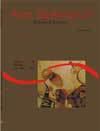Number of larval instars in <em>Plutella xylostella</em> (L.) (Lepidoptera: Yponomeutidae)
Abstract
The present work was carried out to verify indirectly the number of larvae instars in Plutella xylostella. In the Insects Biology Laboratory of Universidade Federal de Viçosa, (temperature 24.5±4ºC; 12 hours photophase and 70±5% RU), larvae were fed in Petri dishes with fresh leaves of cabbage. Daily, they were picked up, boiled and conserved in 70% alcohol. Ninety six (96) cephalic capsules were measured through a magnifying glass estereoscopy. Both number of instars and respective growth rate were evaluated. To reject the hypothesis, the confidance limits for averages of the widths between successive cephalic capsules when overlapping; the lowest value of the linear regression coefficient determination (R2), and disagreement to estimated value of the growth ratio (K) in relation to K variance proposed by Dyar were assumed. Larvae of P. xylostella were grouped and instars were described considering that the cephalic capsules widths in average would be in the intervals (p < 0.05) 0.15-0.162; 0.227-0.259; 0.361-0.395 and 0.462-0.514 mm for the instars I, II, III and IV respectively. The multimodal distribution curve of cephalic capsules widths allowed to estabilish the existence of four instars (K=1.4; R2 = 0.87). The value distribution of the cephalic capsule width followed Dyar’s rule.Downloads
Download data is not yet available.
Published
2008-07-17
How to Cite
Ecole, C. C., Anjos, N. dos, Michereff Filho, M., & Picanço, M. C. (2008). Number of larval instars in <em>Plutella xylostella</em> (L.) (Lepidoptera: Yponomeutidae). Acta Scientiarum. Biological Sciences, 21, 331-335. https://doi.org/10.4025/actascibiolsci.v21i0.4447
Issue
Section
Biology Sciences
DECLARATION OF ORIGINALITY AND COPYRIGHTS
I Declare that current article is original and has not been submitted for publication, in part or in whole, to any other national or international journal.
The copyrights belong exclusively to the authors. Published content is licensed under Creative Commons Attribution 4.0 (CC BY 4.0) guidelines, which allows sharing (copy and distribution of the material in any medium or format) and adaptation (remix, transform, and build upon the material) for any purpose, even commercially, under the terms of attribution.
Read this link for further information on how to use CC BY 4.0 properly.
0.6
2019CiteScore
31st percentile
Powered by 

0.6
2019CiteScore
31st percentile
Powered by 











1.png)




3.png)













